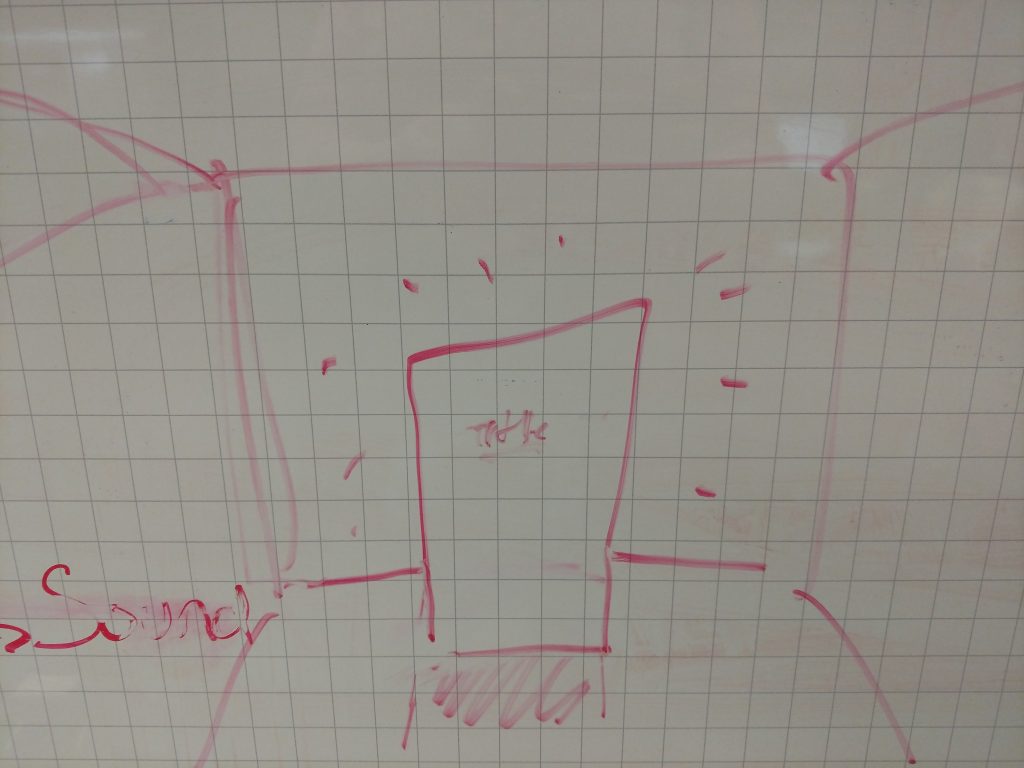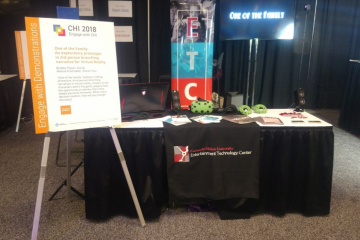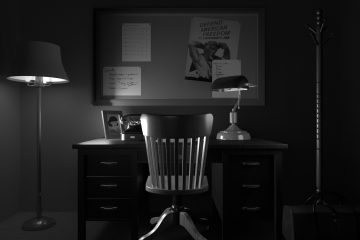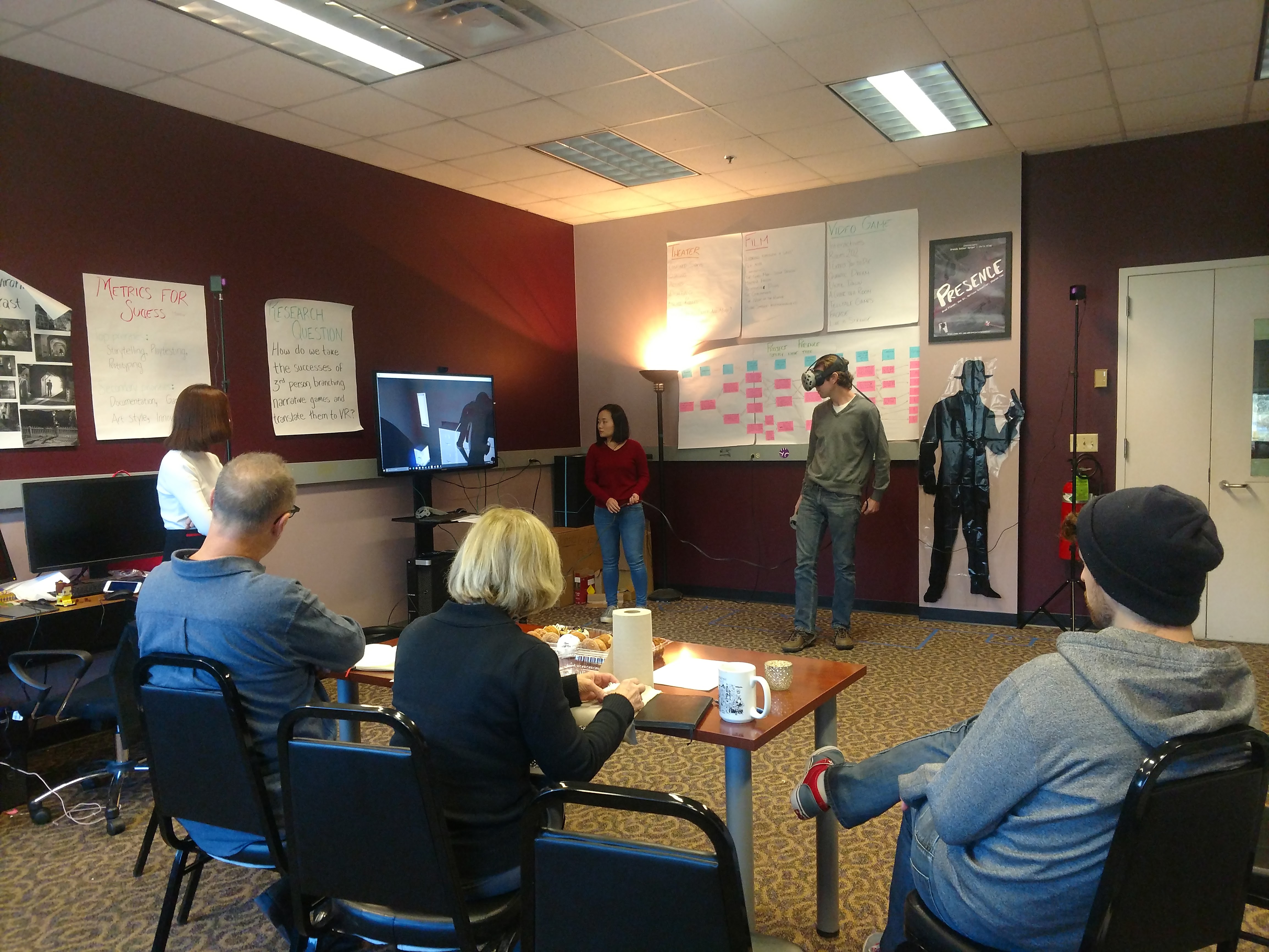This was a simpler week to talk about. Since we are at the mid-way point in the semester, we had to give a “Halves” talk about where we are in the project currently and where we are going. This kept us in a bit of a holding pattern, as we were waiting for faculty feedback on the scheduling end, and waiting for motion capture data to be returned to us on the construction end. Therefore, we used this week to do a bit of soul searching:
Threshold Design
As we mentioned last week, we created our design pillars for how we wanted to introduce the player to our game:
- Established Expectations
- Physical Change
- Symmetry
- Conscious Participation
Taking those ideas, we began a discussion of what we actually wanted to build for our “start menu.”
We knew we wanted to establish the expectation that a film was about to start. This would both prime the viewer well for film noir, and help them to understand that they were viewing something from a 3rd person perspective, much like they would when watching a movie on a screen. From that kernel of an idea, we brainstormed a few different ways of delivering that information:
- A television screen
- A movie theater screen
- An old movie theater projector
We took the last one – an old film projector – and expanded upon the idea. We would use the projector to create a portal for the player to walk through to enter the scene (conscious participation). They would also have to click the glowing start button to get the projector to play (symmetry).
We wanted the space to have color (in contrast to the black and white of the game) and to be visibly different from the dank and dark office where the scene would be playing out (physical change). We threw out there a few different options, such as a large, old time-y theater (too big and too far for the player to walk), or a misty, magical woods in which the projector and screen abstractly sits. Ultimately we settled on a room similar to a screening room for dailies: small, walk-able, but still a theater.
When the portal opens, we decided the player would hear audio signaling the tone of the film (either the sound of a bank robbery gone bad, or a film noir theme track). They would see the title on the other side of the portal, and leading lines to guide the player in.
We aren’t yet sure how well this will work, but we plan to start building it as soon as we feel ready for phase 4 playtesting.
Planning for Audio
There are two aspects of building the game that we have not yet addressed in this blog, and only weakly addressed thus far in the semester: Voice Over and Music!
We are currently on the search for an appropriate place on main campus to record the voice over. While the ETC has a perfectly lovely recording studio, it is not easily reachable from main campus, so getting our incredibly busy actors in the studio would be that much more difficult. As a result, we are now beginning talks on where and how to book the perfect recording studio for our needs.
As far as music is concerned, we have been working with Stephen Murphy, a Carnegie Mellon alumnus, and professional musician and composer. We had a formal call with him this week to solidify the plan for the rest of the semester. He educated us in the music writing process for games and films, which we then used to structure our process.
The first step in this process is to make a time coded video that Stephen will use to create the music for each node. Brad assembled that on Friday, and now Stephen is working on creating the sheet music and midi placeholders.
Eventually we will bring Stephen and a handful of other musicians to record in a studio on main campus. We are hopeful that this will create a personal and stylistic feel appropriate to the tone of the game and time period.
Halves Presentation
Finally – we presented our progress thus far. Click play below to hear us sum up the last 8 weeks!



